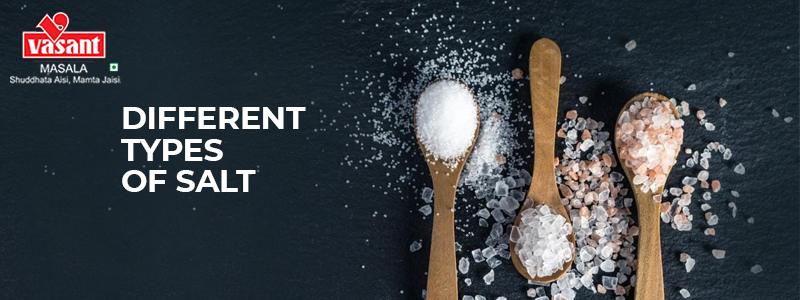
Salt, the most ubiquitous ingredient in the culinary world, is an affordable gem that elevates any meal to the next level. Too much and you've blown it; too little and you've wasted a chance to make your taste receptors burst. It's also calorie-free.
That "salty" flavour is one of the most sought by humans, capable of making fruit sweeter, reducing bitterness in items like cruciferous vegetables, and adding texture and crunch to pretzels. As a vital nutrient, we mine it hundreds of feet beneath the Earth's crust and collect it from the oceans. For millennia, salt has been a valuable commodity.
Salt is undoubtedly one of the most vital culinary ingredients on the planet. The dilemma is whether to salt or not to salt! For years, physicians and government authorities have advised us to limit our salt use for health reasons. According to experts, a high-salt diet can cause high blood pressure, heart disease, stroke, and even death. But is this correct? Is salt truly the enemy? While there is still disagreement on this subject, research indicates that the white substance we use to flavour our meals isn't quite as bad as it's made out to be. Well, if you're eating the right type of salt.
Table of Contents
- What is salt?
- Different Types of Salt
- 2.1. Table Salt
- 2.2. Sea Salt
- 2.3. Himalayan Pink Salt
- 2.4. Kosher Salt
- 2.5. Pickling Salt
- 2.6. Black Salt
What is Salt?
Salt is one of the most sought-after minerals content on the planet, not only for its flavour-enhancing properties but also because it is required by the human body for the brain to convey critical electrical impulses throughout the body. Salt is made up of two minerals: sodium and chloride, both of which are necessary for human survival. It is so coveted by humans that it was originally used as a kind of payment in Ancient Rome, which is where the term "salary" comes from.
Salt is most often used to flavour dishes since it increases their aroma. Because of its antimicrobial qualities, it is also useful for food preservation and cleaning. Because different forms of salt have varied impacts on your meals, it's critical to choose the correct salt for your purpose. It's worth noting that the size of the salt grain affects the taste intensity and the amount of salt used in a dish. As a result, you should not substitute one salt kind for another because it will affect the end outcome.
Different Types of Salt
Salts come in a range of colours, textures, flavours, and nutritional values. We'll look at several salt varieties from across the world and their use.
Table Salt:
Refined salt, often known as table salt or cooking salt, is derived from either salt mines or evaporated seawater. I'd like to take a moment to add a brief remark here to make you aware that the word refined on any food label should raise a red signal. This single term indicates that the food has been processed. When food is refined (processed), it is no longer in its natural condition. As in the instance of refined salt, what began as a helpful mineral is rapidly changed into a different condition. It has been chemically cleaned and removed of essential therapeutic minerals, reducing its original natural nutrition.
Sea Salt:
If you've ever tried sea salt, you'll notice that it has a very different feel than regular table salt. Because sea salt is less crushed, the salt flakes are bigger. This salt is produced by evaporating saltwater and typically contains trace minerals such as potassium, iron, and zinc. While sea salt is preferable to refined table salt, it is still not the best option. Because of the contaminants in our seas, this is the case. Toxic toxins such as mercury and others have been dumped into our waters. Sea salt can include tiny quantities of heavy metals like lead and mercury, as pollution has harmed our seafood supply.
Himalayan Pink Salt:
Pink Himalayan salt comes from the Himalayan mountains. It's known as the cleanest salt on the planet since it's supposed to be free of modern-day poisons and pollution. Another advantage of Himalayan salt is that it has a lower sodium content than table salt. Additionally, it includes trace quantities of minerals, including iron, potassium, magnesium, and calcium. In fact, naturally occurring trace minerals make up 16 per cent of Himalayan salt. Regular use of pink Himalayan salt, according to doctors, can help balance electrolytes, maintain a healthy pH level in the body, improve nutrient absorption, and remove pollutants. Aside from the health advantages, this salt is coarser and has a distinct flavour.
Kosher Salt:
Kosher salt, often known as kitchen salt, is a type of edible salt that has a bigger grain size than regular table salt and is free of common additions like iodine. It is mostly sodium chloride and may contain anti-caking additives, similar to table salt. Cooking, bringing meats, and cleaning cookware such as cast-iron skillets are all common uses for salt.
Pickling Salt:
Pickling salt, also known as preserving salt or canning salt, contains no additives (such as anti-caking chemicals) and hence will not cloud pickling water. The tiny granules dissolve quickly and should be stored in an airtight container to avoid clumping. Because it's such a concentrated salt, working with it should be done with caution. It is great for vegetable gardeners who wish to keep the summer taste fresh
Black Salt:
Do you want to add an "eggy" taste to your recipes? This salt is intended for you. Due to the Indian spices and herbs cooked into it at extremely high temperatures, black salt (or Kala namak) has a distinct Sulphuric odour. Sulphur is released into the salt during the heating process from the seeds of the hard fruit.
For people who do fasting, Farali salt is also available on the market.

